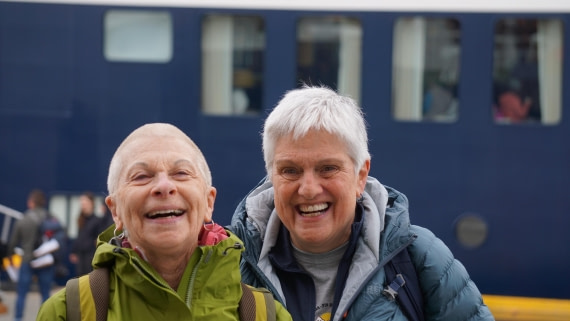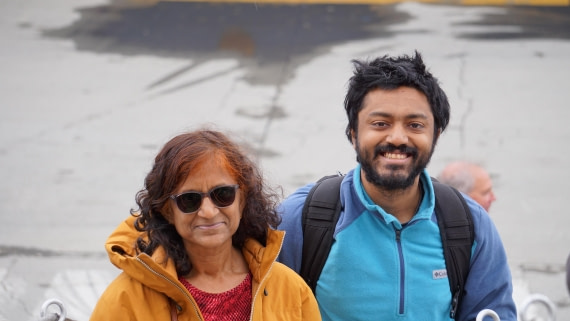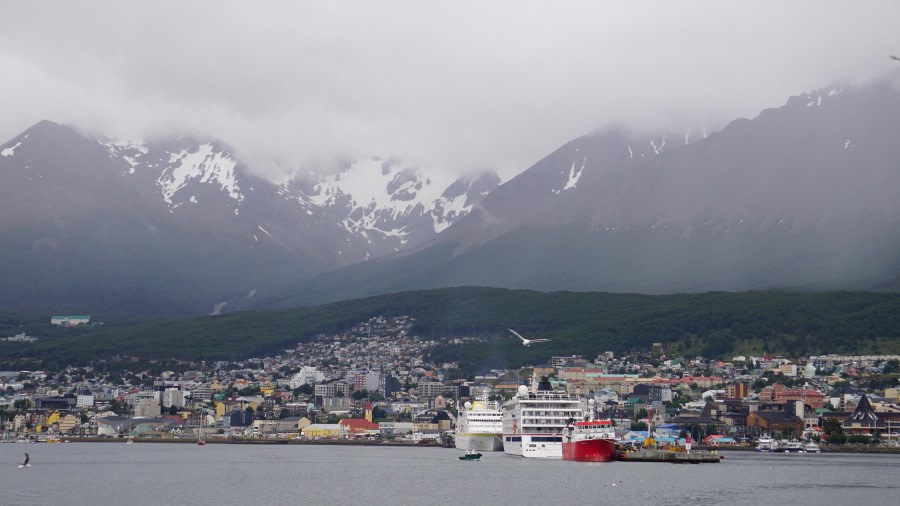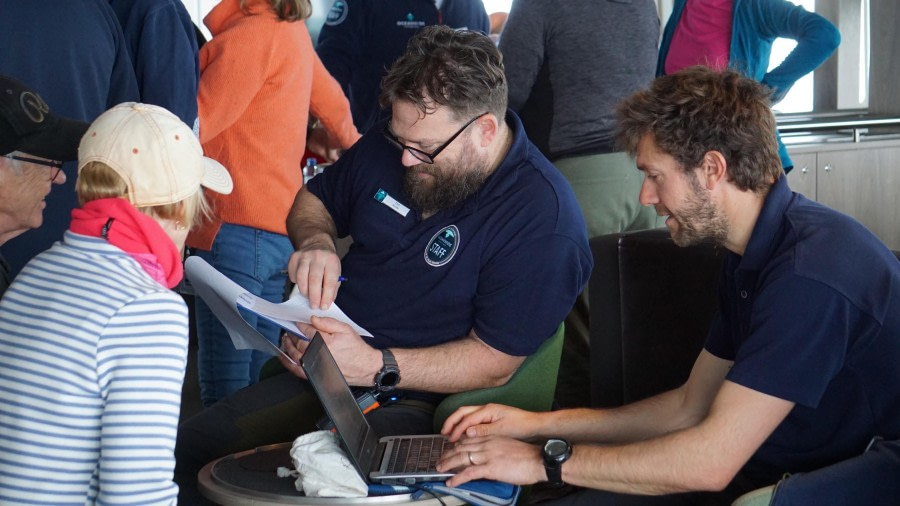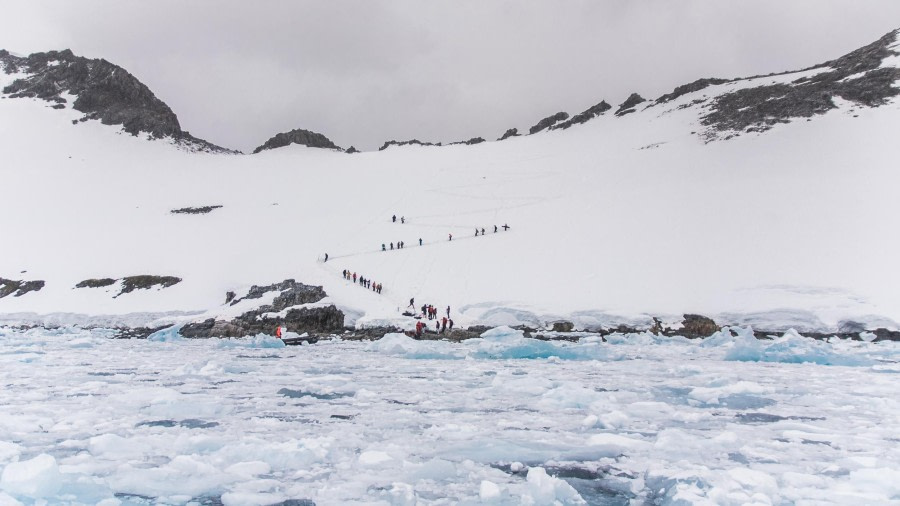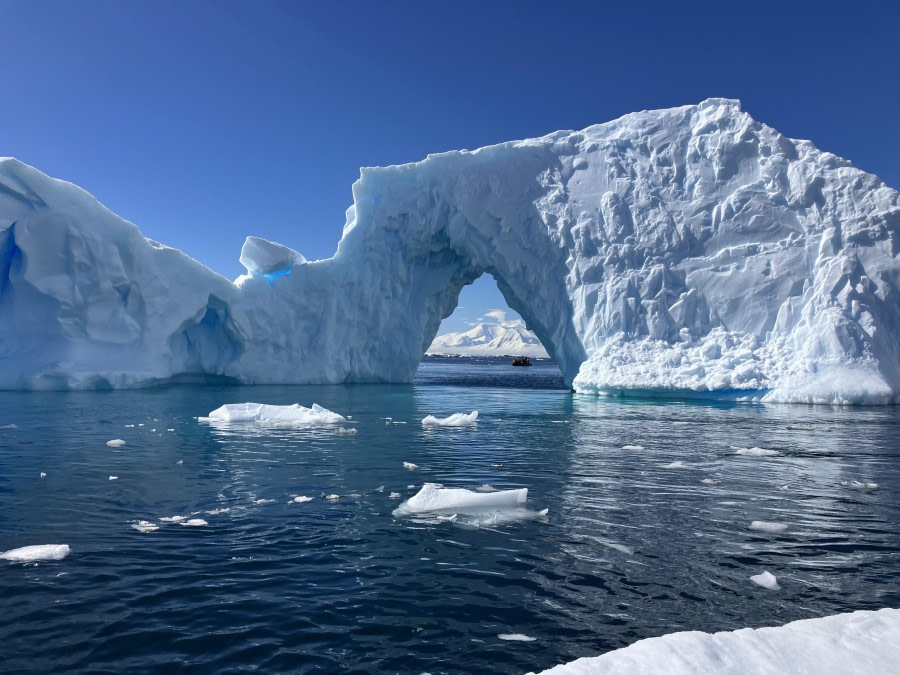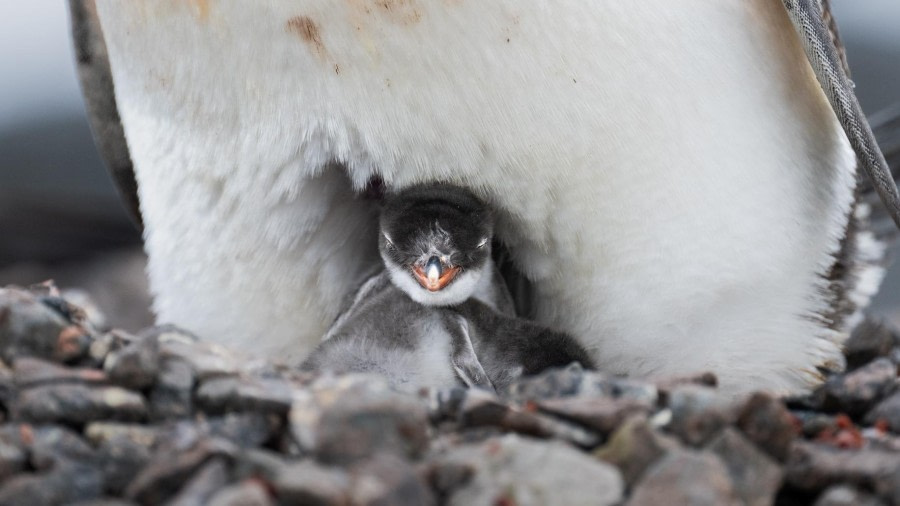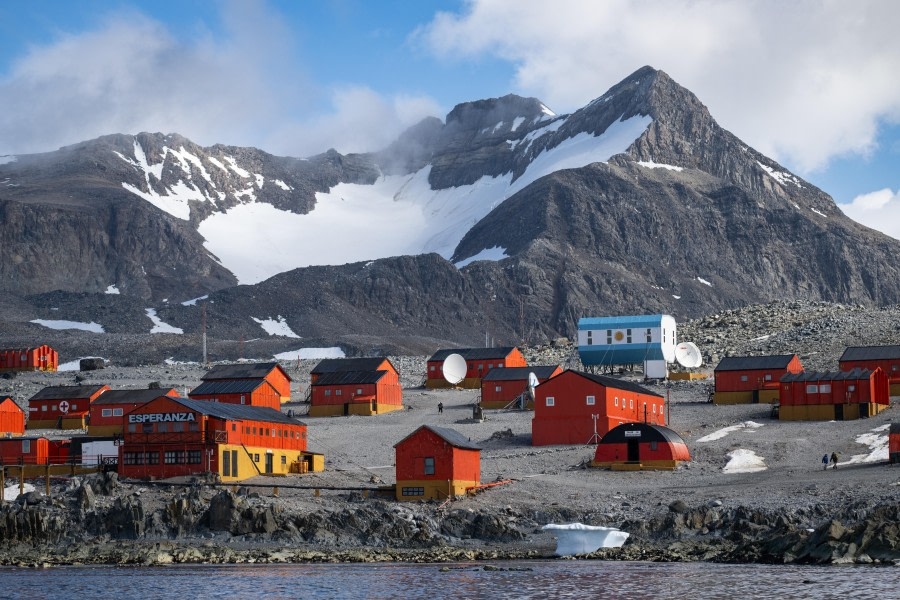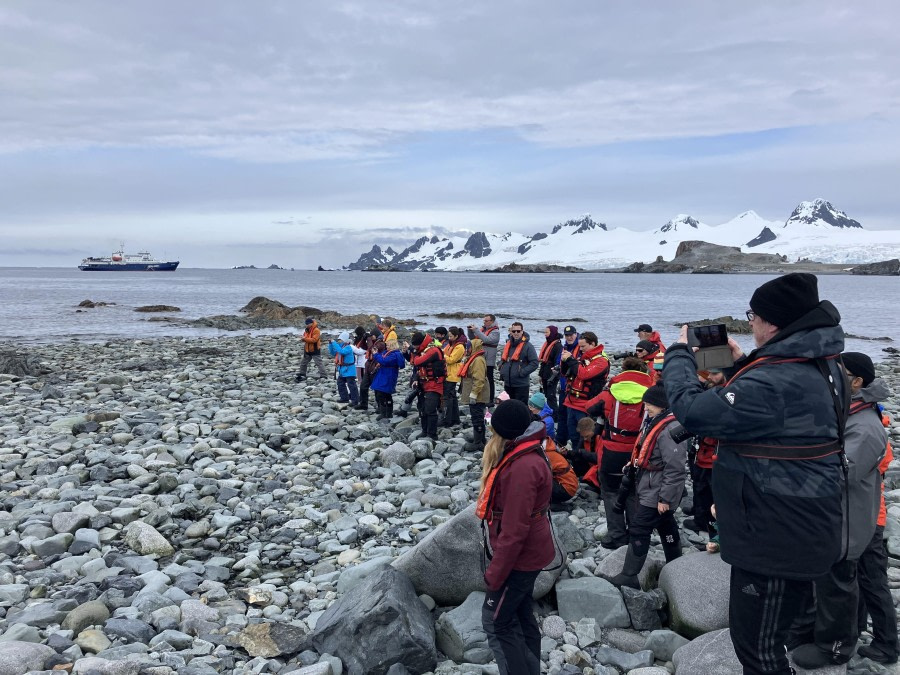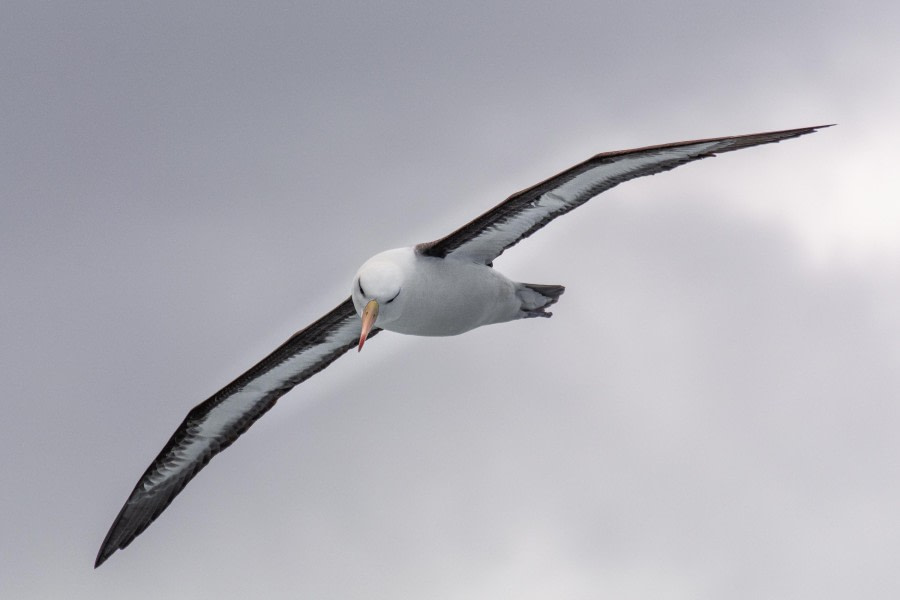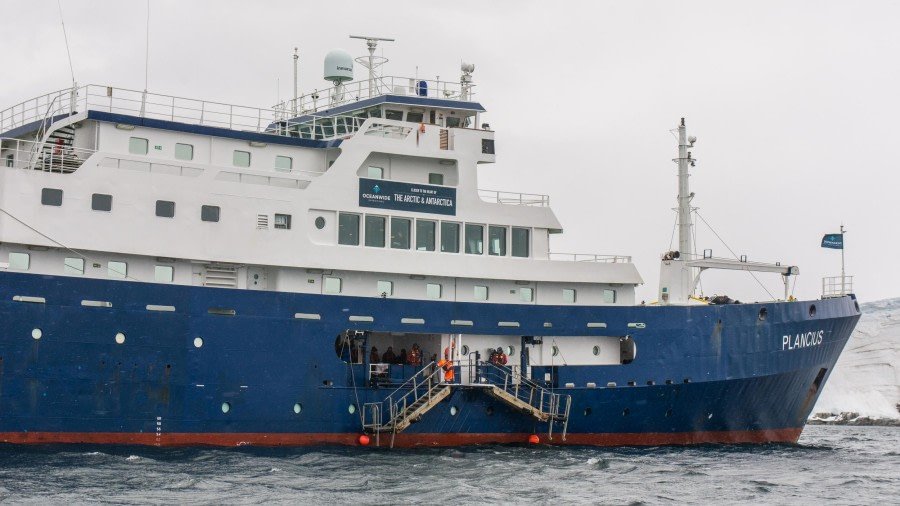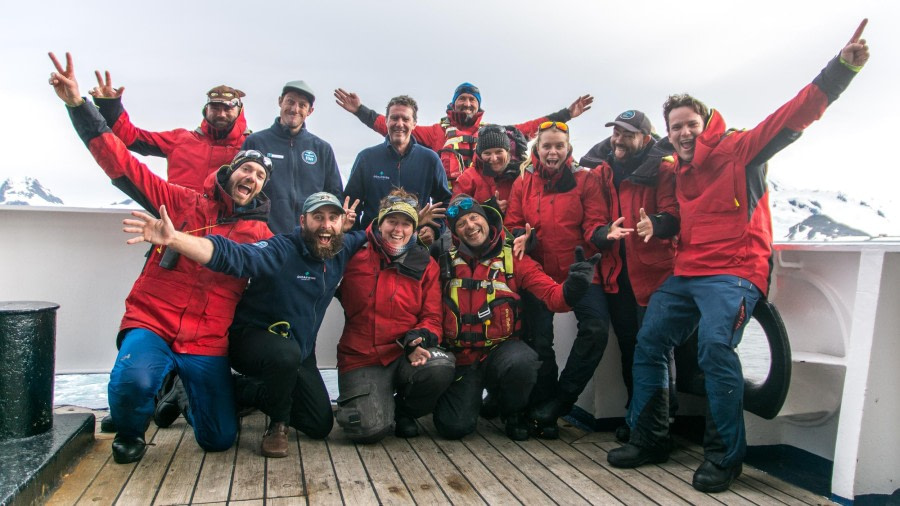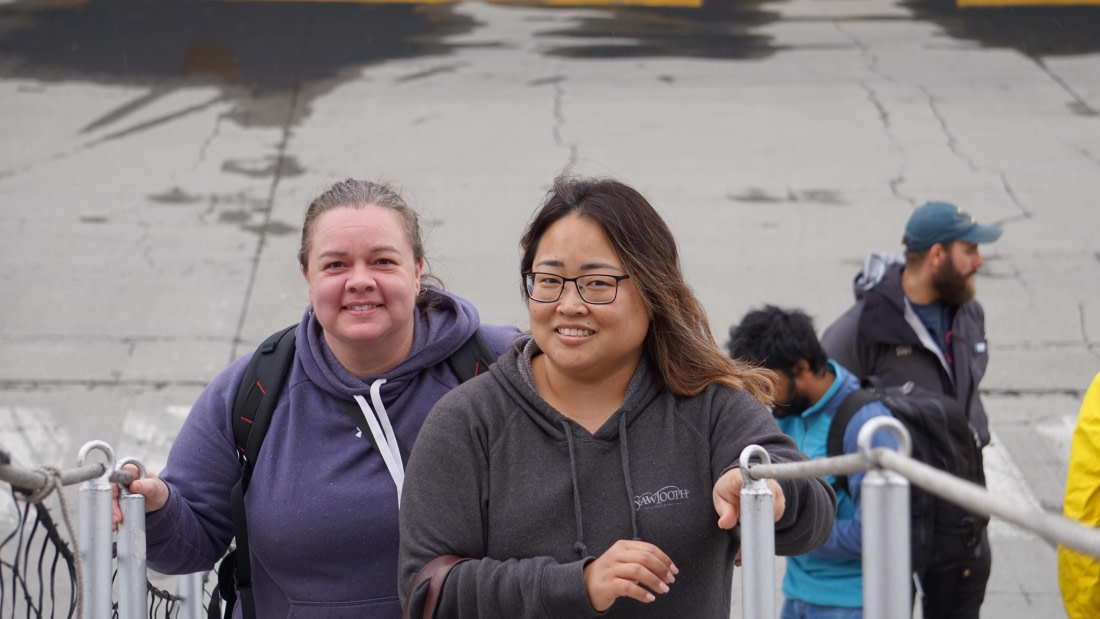| Datum: |
09.01.2024 |
| Position: |
65°10.4’S / 64°02.4’W |
| Wind: |
NE 3 |
| Wetter: |
Clear |
| Lufttemperatur: |
+5 |
In the morning we were early on deck as the Captain was going to steer the ship through the famous narrows of the Lemaire channel. Just before the Captain could enter the channel we were stopped by a small pod of Killer-whales, it looked like they were guarding the entrance. After a while we were granted permission and Captain navigated Plancius with great skill through the narrows. The landscape was breathtaking, a high Alpine landscape at sea level with glaciers everywhere. It was a very sunny start of the day and the weather proofed to be awesome during the rest of the morning as well.
After yet another delicious breakfast the expedition team landed us at Peterman island. On the island we could go and visit an Adelie penguin colony, and stretch our legs going to the top. The Adelies had some recently hatched chicks which were comfortably tucked away under their parent’s belly.
Close to the Argentine station building there was a group of elephant seals hauled out which we could approach. We could closely observe the resting behavior of these giants, they were lying very relaxed yawning and scratching, digesting their food and getting rid of their loose fur.
In the afternoon we zodiac cruised a so-called Iceberg graveyard round Planeau island. The weather was amazing and we observed with amazement how nature had sculpted the chunks of ice in all kinds of fantastic forms. The light played with the forms and provided us with a spectacle of colors. In the ice we encountered leopard seals and Wedel seals, a truly spectacular afternoon.
In the evening we had a recap and a quick dinner before the second group of campers were dropped off at a site called Hovgaard. Initially it was a bit windy, but when the sun dropped behind the horizon, the local winds dropped and the campers had a great night with spectacular scenery. The bridge held a close watch on a big iceberg floating towards the entrance of the Lemaire channel, but luckily it did not block the entrance during the night.
MOUNTAINEERING
Location: Hovgaard Island, Penola Strait
Pristine weather and untouched snow made for a majestic ascent of Hovgaard Island, the summit reaching 369 meters above sea level. Clear skies allowed distant views south past the Vernadsky Islands and beyond. Some of the more adventurous members of the team even took the opportunity to explore a couple of crevasses!
KAYAKING
Location: Petermann island, Penola Strait
The sea looked like glass! It couldn’t be any calmer. With mountains reflected in the mirror like water, we climbed into the kayaks and started our journey. The plan was to navigate the whole length of Peterman N to S and then head out into the Bay to see if we could find a Whale.
As we paddled along the coast we were met by a small gang of Antarctic Shags, clearly curious by us kayakers they came in for a closer look. After their curiosity was fulfilled, they flew off and we continued to the penguin rookery.
There were plenty of Adele penguins rafting in the water, launching and landing off the rocks and we had a fabulous view of the shag chicks on top of the cliffs. Continuing on we found a tiny wedel seal by the hut and several large wedel seals lying on the snow on the islands south of Petermann.
We finished our journey by paddling out and through the huge icebergs. One Ice arch towered above all the others. A tempting adventure, but these icebergs can’t be trusted.
Location: Pleneau island, Salpétriere Bay
With such perfect conditions the best expedition decision we could make, was to invite the cancelled Orne harbour kayakers out to play as well as the original signed up team. So, Erin had the joy of leading two teams this afternoon. The first paddling out from the Lemaire channel through the brash ice and into the Iceberg graveyard. These huge bergs really make you feel tiny! A giant tower marked the middle of the iceberg graveyard, a leopard seal sunning himself on an iceberg nearby. We continued through the maze and popped out into a deep channel where we found a crabeater seal floating on a small berg. We met George who had a zodiac full of more kayakers who had been cruising.
We did some swapping magic and ‘hey presto’ the second team of kayaks where now on the water. This team would get to paddle back across the channel and into the graveyard. The wind had picked up now and there was a bit more chill in the air. We found the huge tower using is as a navigational mark to get back to the ship. “Give it a wide berth guys” Skimming around the edge of the big bergs bay, a yacht cut through underneath the giant berg tower. CRACK! Uh-oh! Face the wave, that’s the tactic. The yacht scarily close to the berg as it crumbled had quite some near miss. Lucky Boat. But the wave was for sure going to give us a challenge. CRACK! Uh-oh. The entire tower fell into the water. “PADDLE GUYS!” this was a wave we should try to avoid. Finding a little cover from an iceberg we surfed the huge waves as we escaped. Now that’s going to be a fun story to tell back home.
CAMPING
Location: Hovgaard island, Penola Strait
After a fantastic afternoon zodiac cruise around Planeau and Booth islands; M/V Plancius hold on in position right in the middle of Penola strait among tabular, pinnacle and drydock icebergs. The weather was excellent as it had been throughout the day; a clear sky and whispy air. Soon after dinner our zodiac drivers shuttled us to the eastern shore of Hovgaard island. We collected our shovels and started arranging our snowpits for the night.
Across the bay views of the craggy peaks of Booth island enlighted by the warm yellow light a long Antarctic sunset, while a couple of Weddell seals were resting nearby and a few Gentoo penguins visited the shoreline. This was our special setting for our first and memorable overnight in the White Continent. Certainly an experience to rememeber!
